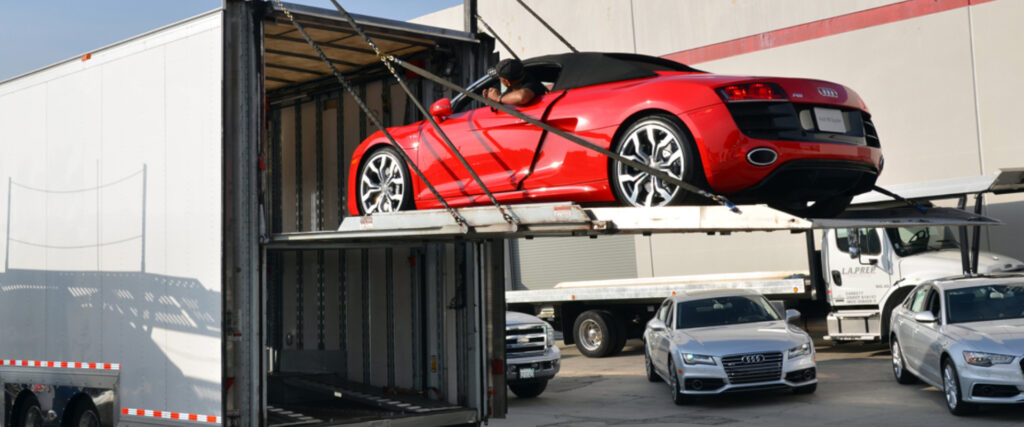You’ve just landed a fantastic job opportunity in Bangalore, but your beloved car is parked in your garage in Delhi. Or perhaps you’ve finally found the vintage motorcycle of your dreams, but it’s halfway across the country. This is where vehicle transportation services in India come to the rescue! However, finding the right vehicle transportation services can be challenging. So, let’s have a look at the main factors you should consider when choosing a vehicle transport service.
How to Choose Vehicle Transportation Services
India’s rapid economic growth and increasing mobility have led to a surge in demand for vehicle transportation services. Whether it’s for relocation, online vehicle purchases, or moving that prized possession, more and more Indians are turning to these services. But let’s face it – entrusting your vehicle to strangers can be nerve-wracking. Below, we will walk you through how to find the best transportation service.
1. Do Your Research Thoroughly
Just like you wouldn’t embark on a road trip without planning your route, don’t dive into vehicle transportation without thorough research. Start by listing out reputable companies in India. Some well-known names include Agarwal Packers and Movers, Safe Express, and GATI, but don’t limit yourself to just the big players.
Look for companies that specialise in vehicle transportation. Many general moving companies offer this service, but those focusing solely on vehicles often have more expertise and specialised equipment.
Pro tip: Create a spreadsheet to compare different services, their costs, and what they offer. Trust us, this will save you hours of confusion later on.
Also Read: Water RO Installation Service: What To Consider And Importance
2. To Get Clarity about the Service
If you have been going for years or it is your first time, you must know a few things about vehicle transportation services. Let’s take a look below:
1. Open vs. Closed Transport: Open transport is cheaper but exposes your vehicle to the elements. Closed transport offers more protection but at a higher cost.
2. Door-to-Door vs. Terminal-to-Terminal: Door-to-door service is convenient but expensive. Terminal-to-terminal requires you to drop off and pick up your vehicle at designated locations but can save you money.
3. Shared vs. Exclusive Transport: Shared transport means your vehicle travels with others, reducing costs. Exclusive transport is pricier but faster and offers more flexibility.
4. Transit Time: Remember, this isn’t like ordering food delivery! Cross-country transportation can take anywhere from a few days to a couple of weeks. So, you should plan accordingly.
Don’t hesitate to call companies and ask questions. A good transporter will be patient and happy to explain these options to you.
3. Make Insurance Your Safety Net
Here’s a crucial point many overlook – shipping insurance. Most reputable companies provide basic insurance, but it might not cover all scenarios. Ask about the extent of the coverage. Does it cover damages during loading and unloading? What about theft or accidents during transit? Don’t shy away from asking for the insurance policy document – a legitimate company will have no problems sharing this information.
Also Read: Why And How To Choose The Best TV Installation Service Near You
4. Do Your Homework
In the age of the internet, there’s no excuse for not checking a company’s reputation. Start with online reviews, but don’t stop there. Look for feedback on social media platforms and forums. Websites like MouthShut and ConsumerComplaints.in can offer insights into customer experiences.
But here’s a tip – take online reviews with a pinch of salt. Look for patterns in feedback rather than focusing on one or two extreme reviews. And don’t be swayed by suspiciously glowing reviews; they might be fabricated. Reach out to friends or colleagues who’ve used vehicle transportation services. Personal recommendations can be invaluable.
Preparing Your Vehicle for the Journey
Once you’ve chosen your transporter, it’s time to prepare your vehicle. Here’s what I typically do:
1. Clean your vehicle thoroughly – this helps in identifying any existing damages
2. Document the condition with photographs – take clear shots of all angles, including any existing scratches or dents
3. Remove all personal items – most transporters won’t be responsible for these
4. Ensure there’s enough fuel – usually, a quarter tank is sufficient
5. Check tyre pressure and battery condition
6. Disable the alarm system if possible.
What Should You Expect on the D-Day?
On the day of pickup, the transporter will usually conduct their own inspection. Don’t rush through this process. Go through their report carefully and ensure it matches your own documentation. This is your last chance to point out any existing issues before the vehicle is loaded.
Ask for contact details and expected delivery dates. Most companies now offer tracking services – make sure you have access to these. Once your vehicle is on its way, all you can do is wait. Use the tracking service if available, but don’t obsess over it. Delays can happen due to various reasons, from traffic to weather conditions.
Also Read: How To Get A New Gas Connection: Online And Offline Modes
While Receiving Your Vehicle
When your vehicle arrives, it’s time for another thorough inspection. Check every nook and cranny against your initial documentation. If there are any issues, report them immediately. Most reputable companies will have a process for handling damages or discrepancies.
Transporting a vehicle across India doesn’t have to be a headache-inducing experience. With thorough research, clear communication, and a bit of patience, you can ensure your prized possession reaches its destination safely. Remember, every vehicle has a story, and every journey adds to that story, so choose a vehicle transportation service carefully!
Also Read: Geyser Installation Service: How To Choose The Right One






